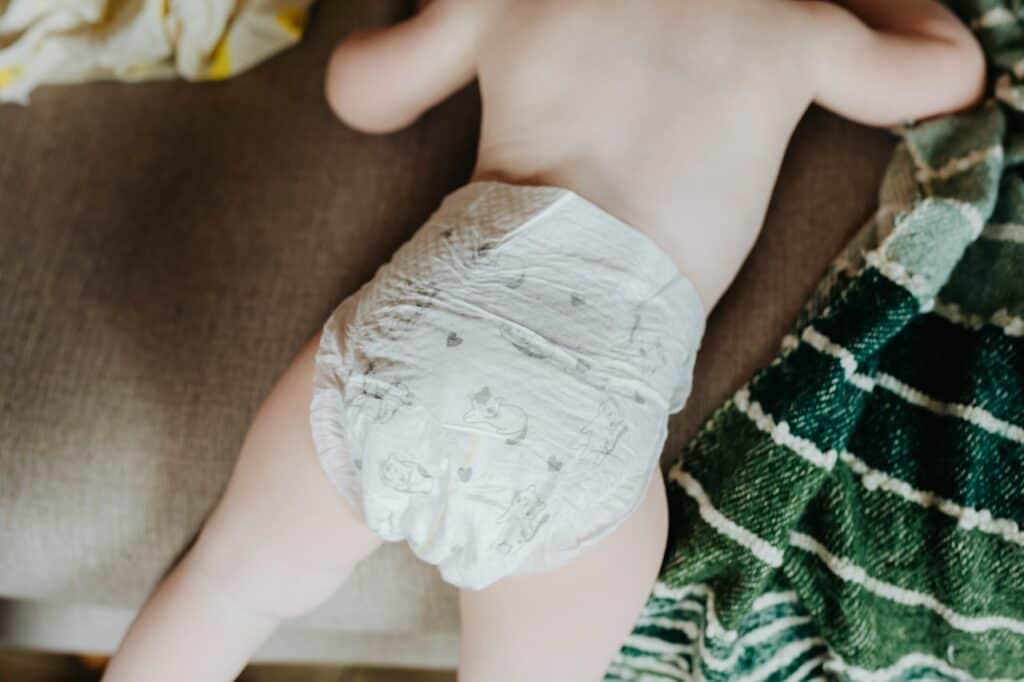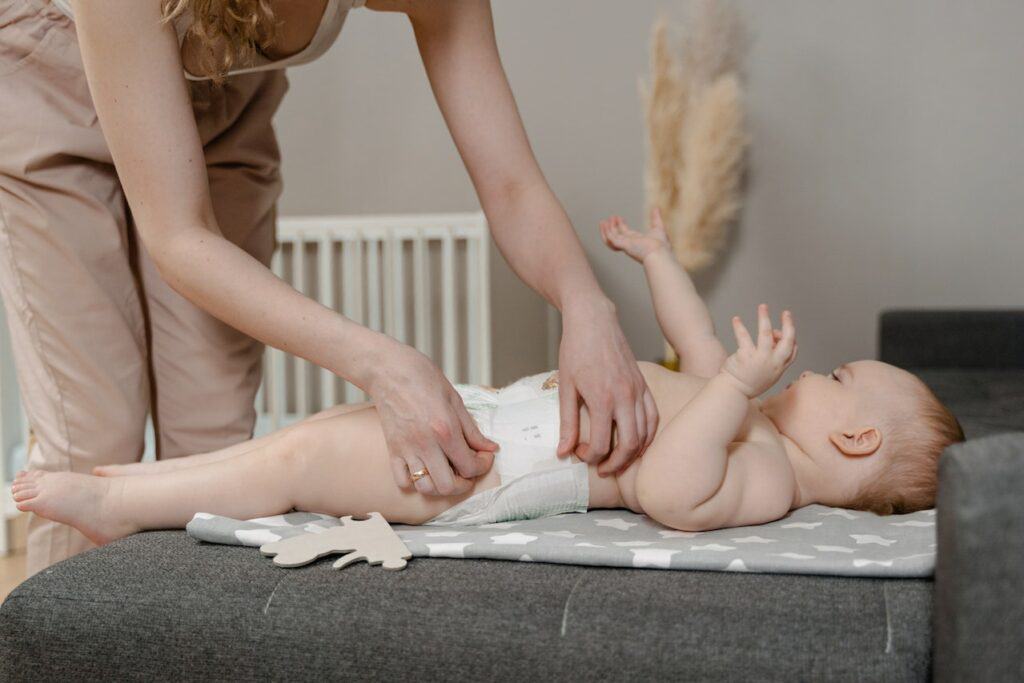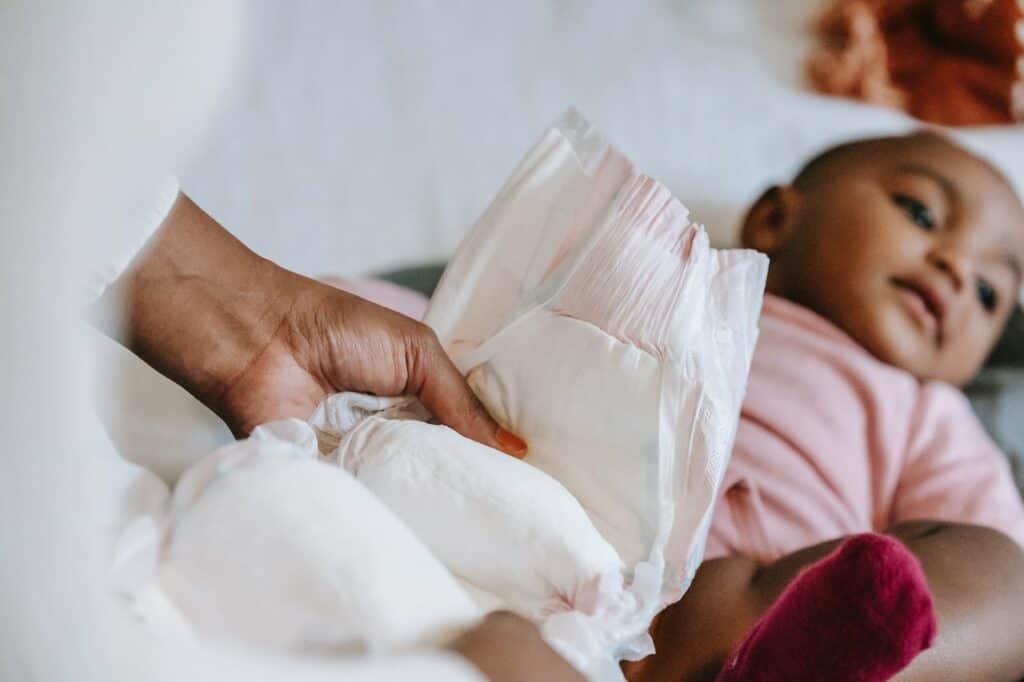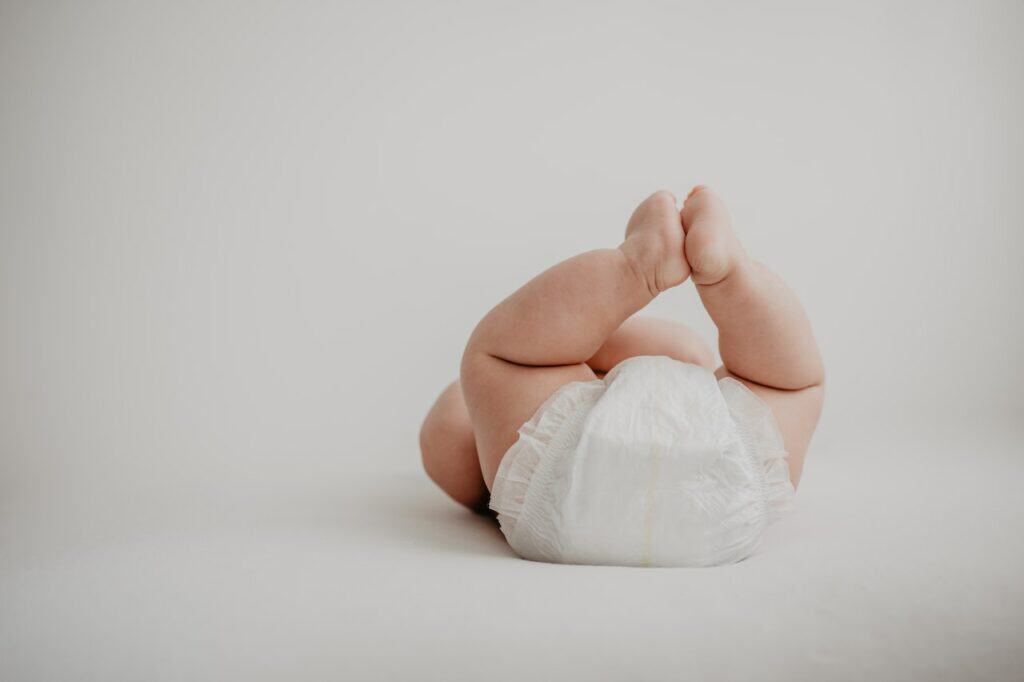Diaper blowouts are a common and frustrating problem for many parents. Not only are they messy and time-consuming to clean up, but they can also be embarrassing when they happen in public. Fortunately, there are steps you can take to prevent diaper blowouts from happening in the first place.
Understanding why diaper blowouts occur is the first step in preventing them. In many cases, blowouts happen when a diaper is too small or too loose, which allows stool to escape out the back or sides. Choosing the right size and style of diaper, as well as ensuring a proper fit, can go a long way in preventing blowouts. Additionally, it’s important to be aware of your baby’s bowel movements and to change diapers promptly when needed.
Key Takeaways
- Choosing the right size and style of diaper can help prevent blowouts.
- Ensuring a proper fit is crucial to preventing diaper blowouts.
- Being aware of your baby’s bowel movements and changing diapers promptly can also help prevent blowouts.
Understanding Diaper Blowouts
Diaper blowouts are a common occurrence among babies, and they can be quite messy and frustrating for parents. A diaper blowout is when the baby’s poop leaks out of the diaper and onto their clothes, bedding, or even the furniture. This can happen up the back, down the legs, or even out the sides of the diaper.
There are several reasons why diaper blowouts occur. One of the most common reasons is that the diaper is not fitted properly. If the diaper is too loose, there is a higher chance of leakage. On the other hand, if the diaper is too tight, it can cause discomfort for the baby and lead to blowouts.
Another reason for diaper blowouts is that the baby is producing more poop than the diaper can hold. This can happen if the baby is eating more than usual or if they have a stomach bug. In some cases, the baby may have a medical condition that causes them to produce more poop than usual.
It is also important to note that the type of diaper can make a difference in the occurrence of blowouts. Some diaper brands may fit better than others, and some may be more absorbent. Parents may need to experiment with different brands to find the one that works best for their baby.
To prevent diaper blowouts, parents can take a few steps. First, they should make sure that the diaper is fitted properly and not too loose or too tight. They can also try using a diaper one size larger than what the baby currently wears to provide more coverage. Additionally, parents can try changing the baby’s diaper more frequently, especially if the baby is producing more poop than usual.
In summary, diaper blowouts are a common occurrence among babies, but there are steps that parents can take to prevent them. By understanding the reasons behind blowouts and taking preventative measures, parents can reduce the frequency of messy and frustrating diaper explosions.
Choosing the Right Diaper
When it comes to preventing diaper blowouts up the back, choosing the right diaper is key. There are a few important factors to consider when selecting a diaper, including size, brand, and type.

Considering Diaper Size
One of the most important factors in choosing a diaper is selecting the right size. If a diaper is too small, it may not provide enough coverage to prevent leaks and blowouts. On the other hand, if a diaper is too big, it may not fit properly and could also lead to leaks.
To ensure a proper fit, it’s important to consider both the weight range and age range listed on the diaper packaging. If a baby falls in between weight ranges, it’s usually best to opt for the larger size.
Selecting the Correct Diaper Brand
Different diaper brands may fit differently, so it’s important to find one that fits your baby well. Some parents may prefer a certain brand due to its quality or reputation, while others may try out different brands to see which works best for their baby.
Huggies and Pampers are two popular diaper brands that offer a range of options for different ages and sizes. Huggies Little Movers, for example, are designed for active babies and toddlers and offer a snug fit to prevent leaks.
Understanding Different Types of Diapers
There are two main types of diapers: disposable and cloth. Disposable diapers are convenient and easy to use, while cloth diapers are more environmentally friendly and can save money in the long run.
Within each type, there are also different brands and styles to consider. Some disposable diapers, for example, are designed for overnight use and offer extra absorbency to prevent leaks. Cloth diapers may come in different materials and styles, such as pocket diapers or all-in-ones.
Ultimately, choosing a quality diaper that fits properly is the best way to prevent diaper blowouts up the back. By considering factors such as size, brand, and type, parents can find the right diaper for their baby’s needs.
Ensuring Proper Diaper Fit
When it comes to preventing diaper blowouts, ensuring a proper diaper fit is crucial. A diaper that is too loose can cause leaks and blowouts, while a diaper that is too tight can cause discomfort and even skin irritation. Here are a few tips to help ensure a proper diaper fit.

Securing the Waistband
The waistband of the diaper should fit snugly around the baby’s waist without being too tight. To ensure a proper fit, make sure the diaper is centered on the baby’s bottom and pull the front of the diaper up to the baby’s belly button. Then, fasten the tabs on each side of the diaper, making sure they are aligned and secure. It’s important not to fasten the tabs too tightly, as this can cause discomfort and even restrict the baby’s movement.
Adjusting the Leg Cuffs
The leg cuffs of the diaper should also fit snugly around the baby’s legs without being too tight. To adjust the leg cuffs, gently pull them outwards to create a seal around the baby’s legs. Make sure there are no gaps between the diaper and the baby’s skin, as this can cause leaks and blowouts. It’s important to check the leg cuffs regularly, especially after the baby has been active or has had a bowel movement.
In summary, ensuring a proper diaper fit is key to preventing diaper blowouts. By securing the waistband and adjusting the leg cuffs, parents can help ensure their baby stays comfortable and dry. Remember to check the fit of the diaper regularly and make adjustments as needed to avoid leaks and blowouts.
Preventing Diaper Blowouts
Diaper blowouts are an unpleasant and messy experience for both parents and babies. Fortunately, there are several ways to prevent them from happening. By following these tips, parents can minimize the chances of a blowout and keep their baby clean and comfortable.
Choose the Right Size Diaper
One of the most common causes of diaper blowouts is using a diaper that is too small for the baby. When a diaper is too small, it can’t contain all of the baby’s waste, leading to leaks and blowouts. To prevent this, parents should make sure they are using the right size diaper for their baby’s weight and size. They can check the packaging or consult the manufacturer’s sizing chart to find the right fit.
Use a Blowout Blocker
Blowout blockers are a type of diaper accessory that can help prevent diaper blowouts. They are designed to fit around the waist of the diaper and provide an extra layer of protection against leaks. Parents can use blowout blockers in addition to regular diapers to minimize the chances of a blowout. They are easy to use and can be found at most baby stores.
Change Diapers Regularly
Another way to prevent diaper blowouts is to change diapers regularly. When a diaper is too full, it is more likely to leak or cause a blowout. Parents should check their baby’s diaper frequently and change it as soon as it becomes wet or soiled. This will help keep the diaper from becoming too full and minimize the chances of a blowout.
Make Sure the Diaper Fits Properly
In addition to using the right size diaper, parents should make sure the diaper fits properly. A diaper that is too loose or too tight can cause leaks and blowouts. Parents should make sure the diaper is snug but not too tight around the waist and legs. They can also check for any gaps or spaces around the diaper that could allow waste to escape.
Conclusion
Preventing diaper blowouts is an important part of keeping babies clean and comfortable. By choosing the right size diaper, using a blowout blocker, changing diapers regularly, and making sure the diaper fits properly, parents can minimize the chances of a blowout. With these tips, parents can enjoy a cleaner and less stressful diapering experience.
Dealing with Overnight Diaper Blowouts
Overnight diaper blowouts can be especially challenging for parents. Not only do they disrupt sleep, but they also require extra cleaning and laundry. Here are some tips to help prevent and deal with overnight diaper blowouts:

- Choose the Right Diaper: Not all diapers are created equal. Look for overnight diapers that are designed to hold more liquid and prevent leaks. These diapers often have extra absorbent material and a snug fit around the legs and waist.
- Size Matters: Make sure you are using the correct diaper size for your baby. If the diaper is too small, it can cause leaks and blowouts. If the diaper is too big, it can gap around the legs and waist, leading to leaks.
- Double Up: Consider using a diaper doubler or insert to increase absorbency. These can be especially helpful for heavy wetters or babies who sleep for long periods.
- Change Diapers Frequently: Even with the best diapers and inserts, babies can still experience leaks and blowouts. To prevent this, make sure you are changing your baby’s diaper frequently, especially before bedtime.
- Use a Diaper Cream: Diaper creams can help create a barrier between the diaper and your baby’s skin, reducing the likelihood of leaks and blowouts. Look for creams that are safe for overnight use and do not contain harmful chemicals.
By following these tips, parents can reduce the likelihood of overnight diaper blowouts and make nighttime diaper changes a little less stressful.
Managing Diaper Blowouts While Traveling
Traveling with a baby can be a daunting task, especially when it comes to managing diaper blowouts. However, with a little preparation and know-how, parents can minimize the stress of these messy situations.
First and foremost, always pack extra diapers and wipes in your diaper bag when traveling. It’s better to have too many than not enough, as blowouts can happen unexpectedly. Additionally, consider bringing a plastic bag or two to store soiled clothes or diapers in case a trash can is not readily available.
When changing a diaper while traveling, it’s important to find a clean and flat surface. If a changing table is not available, use a blanket or towel on the ground. Lay the baby down and remove the soiled diaper carefully, making sure not to spread any mess onto the baby’s clothes or skin.
Next, use wipes to clean the baby thoroughly, especially in the creases of the legs and around the diaper area. If the blowout has extended up the baby’s back, use a wet cloth or wipes to clean the back as well.
Once the baby is clean, put on a fresh diaper. Make sure it is snug but not too tight, as this can cause discomfort and even lead to more blowouts. Finally, dispose of the soiled diaper and wipes in a trash can or plastic bag.
In summary, managing diaper blowouts while traveling requires extra preparation and attention to detail. Always pack extra diapers and wipes, find a clean surface to change the baby, and dispose of soiled items properly. With these tips, parents can handle diaper blowouts with confidence and ease.
Understanding Baby’s Bowel Movements
Understanding a baby’s bowel movements is essential to prevent diaper blowouts up the back. Baby poop can vary in color, consistency, and frequency depending on the baby’s age, diet, and health. Here are some things to keep in mind when it comes to baby bowel movements:

Breastfed Babies
Breastfed babies’ poop is typically yellow or green and has a seedy texture. Breastmilk is easily digestible, so breastfed babies usually have frequent bowel movements. It is normal for breastfed babies to have a bowel movement after every feeding or even several times a day.
Formula-Fed Babies
Formula-fed babies’ poop is often firmer and darker than breastfed babies’ poop. Formula milk is less easily digestible, so formula-fed babies usually have fewer bowel movements than breastfed babies. It is normal for formula-fed babies to have a bowel movement once a day or even once every two or three days.
Diarrhea
Diarrhea is when a baby’s bowel movements are more frequent and watery than usual. Diarrhea can be caused by a viral or bacterial infection, food intolerance, or medication. If a baby has diarrhea, it is important to keep them hydrated and to contact a doctor if the diarrhea persists.
Constipation
Constipation is when a baby’s bowel movements are less frequent than usual and the poop is hard and difficult to pass. Constipation can be caused by a lack of fiber in the diet, dehydration, or medication. If a baby has constipation, it is important to offer them plenty of fluids and to contact a doctor if the constipation persists.
In conclusion, understanding a baby’s bowel movements is crucial to prevent diaper blowouts up the back. By knowing what is normal for a baby’s poop and keeping an eye out for any changes, parents can ensure their baby stays healthy and comfortable.
Cleaning Up After a Diaper Blowout
When a diaper blowout occurs, cleaning up can be a daunting task. However, with a few simple steps, the mess can be contained and cleaned up efficiently.
First, remove the soiled clothing and diaper. Use baby wipes to clean the affected area. Be sure to wipe from front to back to prevent any bacteria from spreading. If the blowout has gone up the back, use a cloth diaper cover or envelope onesie to contain the mess and prevent it from spreading further.
Once the baby is clean, it’s time to tackle the laundry. Rinse the soiled clothing in cold water to remove any excess waste. Then, wash the clothing in the hottest water possible with a heavy-duty detergent. Adding a cup of white vinegar to the rinse cycle can also help remove any lingering odors.
For cloth diaper covers or envelope onesies, follow the manufacturer’s instructions for washing. Be sure to use a detergent specifically designed for cloth diapers to prevent any damage to the fabric.
In conclusion, cleaning up after a diaper blowout may seem overwhelming, but with the right tools and techniques, it can be done quickly and efficiently. Remember to always wipe from front to back, use a cloth diaper cover or envelope onesie to contain the mess, and follow proper laundry procedures to ensure the clothing is thoroughly cleaned.
Caring for Baby’s Skin After a Diaper Blowout
After a diaper blowout, it’s important to take extra care of your baby’s delicate skin. Here are some tips to help prevent chafing, diaper rash, and other skin irritations:

- Cleanse the Affected Area: Use a gentle, fragrance-free baby wipe or a soft cloth with warm water to clean the area thoroughly. Avoid using soap, which can be too harsh for sensitive skin.
- Dab, Don’t Rub: After cleaning, pat the area dry with a soft towel or cloth. Avoid rubbing the skin, which can cause further irritation.
- Apply Diaper Cream: If your baby is prone to diaper rash, apply a thin layer of diaper cream to the affected area. Look for a cream that contains zinc oxide, which can help soothe and protect the skin.
- Let the Skin Breathe: Whenever possible, give your baby some diaper-free time to allow the skin to breathe. Lay a towel or waterproof mat down to catch any accidents.
- Choose the Right Diaper: Make sure your baby is wearing the right size diaper to prevent leaks and blowouts. Look for a diaper with a snug fit around the waist and legs.
By following these simple steps, you can help keep your baby’s skin healthy and free from irritation after a diaper blowout.
When to Consult a Pediatrician
While diaper blowouts are a common occurrence, there are certain situations where it may be necessary to consult a pediatrician. Here are some instances where it is recommended to seek medical advice:
- Frequent blowouts: If your baby is experiencing frequent blowouts, it may be a sign of an underlying medical issue such as diarrhea or food intolerance. In such cases, it is recommended to consult a pediatrician to rule out any underlying conditions.
- Persistent rash: If your baby develops a persistent rash in the diaper area, it may be a sign of a diaper rash or a yeast infection. While diaper rash is common and can be treated with over-the-counter creams, a yeast infection requires medical attention. A pediatrician can diagnose the condition and prescribe the appropriate treatment.
- Signs of stress: If your baby seems to be in distress during or after a diaper blowout, it may be a sign of stress. This can be due to discomfort or pain caused by the blowout or underlying medical conditions. In such cases, it is recommended to consult a pediatrician to assess the situation and provide appropriate care.
In general, if you have any concerns about your baby’s health or well-being, it is always better to consult a pediatrician. They can provide expert advice and guidance to help you manage any issues and ensure your baby’s health and comfort.
Related post: Poop Changes When Transitioning to Whole Milk
Frequently Asked Questions
How can I prevent diaper leaks up the back?
To prevent diaper leaks up the back, it is important to ensure that the diaper is properly fitted. Make sure that the waistband is snug but not too tight, and that the leg cuffs are pulled out to create a barrier against leaks. Additionally, avoid overfeeding your baby, as this can lead to increased pressure on the diaper.
What are some effective ways to avoid diaper blowouts?
Some effective ways to avoid diaper blowouts include changing your baby’s diaper frequently, especially after feedings, and making sure that the diaper is properly fitted. You can also try using a diaper with a higher absorbency level or adding a diaper booster pad for extra protection.
Are there any diaper brands that are less prone to blowouts?
While there is no one brand that is guaranteed to prevent diaper blowouts, some parents have had success with certain brands. It may be helpful to try out a few different brands to see which one works best for your baby.
Can using diaper extenders help prevent blowouts?
Using diaper extenders can be a helpful way to prevent blowouts, as they provide extra coverage and support for the diaper. However, it is important to make sure that the diaper is still properly fitted and that the extender is not too tight.
What should I do if my baby frequently experiences diaper blowouts?
If your baby frequently experiences diaper blowouts, it may be helpful to try a different diaper brand or size. You can also try adding a diaper booster pad or using a diaper with a higher absorbency level. If the problem persists, it may be worth consulting with your pediatrician to rule out any underlying medical issues.
Is there a certain way to dress my baby to prevent diaper blowouts?
To prevent diaper blowouts, it is important to avoid dressing your baby in clothing that is too tight or constricting. Loose-fitting clothing can help to reduce pressure on the diaper and prevent leaks. Additionally, it may be helpful to dress your baby in clothing with a snug waistband to keep the diaper in place.

Iesha is a loving mother of 2 beautiful children. She’s an active parent who enjoys indoor and outdoor adventures with her family. Her mission is to share practical and realistic parenting advice to help the parenting community becoming stronger.
